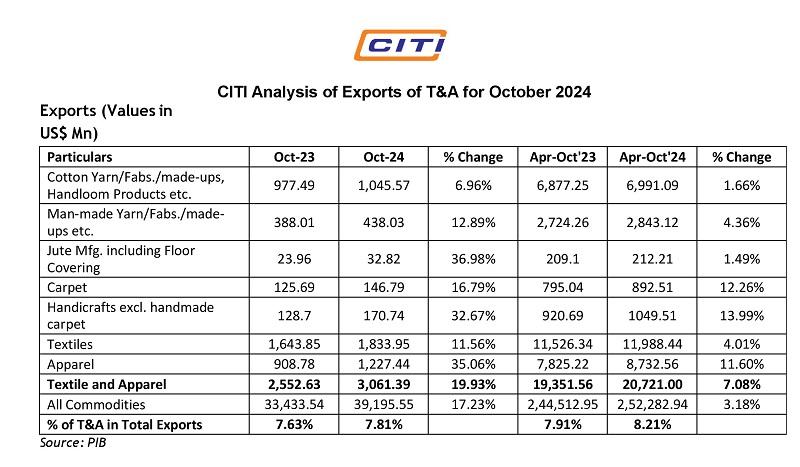
The recently concluded Vietnam International Trade Fair for Apparel, Textiles, and Textile Technologies (VIATT 2024) served as a powerful platform to showcase Vietnam's meteoric rise in the global textile and apparel (T&A) industry. Held in Ho Chi Minh City from February 28th to March 1st, the event attracted over 400 exhibitors and a significant number of visitors, highlighting the sector's growing importance to the Vietnamese economy.
Vietnam’s claim to success
Vietnam's T&A exports reached a record-breaking USD 44.5 billion in 2022, exceeding the Ministry of Industry and Trade's (MoIT) target and reflecting a remarkable 21.4% growth compared to 2021.Vietnam is currently the world's ‘second-largest’ T&A exporter, trailing only China. The T&A industry employs over 2.7 million workers in Vietnam, accounting for roughly 14% of the nation's total manufacturing workforce.
Strategic advantages propelling Vietnam
Beyond showcasing Vietnam's robust production capabilities, VIATT 2024 emphasized the nation's strategic advantages in the global T&A landscape like favorable trade agreements as Vietnam enjoys preferential access to major markets like the US and the EU through free trade agreements, making it an attractive destination for foreign investors. Cost-Competitive Production is another advantage as Vietnam offers competitive labor costs and a well-developed infrastructure, making it a cost-effective manufacturing location. The Vietnamese workforce is renowned for its diligence and adaptability, readily acquiring new skills to meet evolving industry demands.
Capitalizing on the "China+1" strategy
VIATT 2024 also understated Vietnam's strategic position in the context of the "China+1" strategy. This strategy sees companies diversifying production bases beyond China to mitigate risks and explore new opportunities. Vietnam's rise coincides with challenges faced by China, including rising tariffs because of trade disputes with major markets have resulted in significant tariffs on Chinese textiles and apparel. And Anti-dumping sentiments, concerns about intellectual property theft and unfair labor practices in China have led to a growing anti-China sentiment in some Western markets.
What makes Vietnam a compelling "China+1" alternative?
Several factors make Vietnam a compelling alternative for companies pursuing a "China+1" strategy; its proximity and integration, as Vietnam shares a border with China, facilitating easier movement of goods, materials, and expertise. Vietnam has complementary strengths as China excels in high-volume, low-cost production, while Vietnam is increasingly focusing on mid-range apparel and value-added services, creating a complementary production ecosystem within Southeast Asia. Vietnam offers favorable investment environment like attractive tax breaks, streamlined regulations, and a young, trainable workforce, making it a cost-effective alternative to China.
Chinese outbound foreign direct investment in Vietnam's T&A sector surpassed $1.8 billion between 2015 and 2020 . And major apparel brands like Nike and Adidas are reportedly increasing production in Vietnam further solidifying the country's position
Challenges and the road ahead
While Vietnam offers significant potential, challenges remain like infrastructure development, Vietnam’s infrastructure needs further development to handle large-scale manufacturing efficiently. And skill development needed for upskilling the workforce to meet the demands of a more sophisticated T&A industry is crucial.












